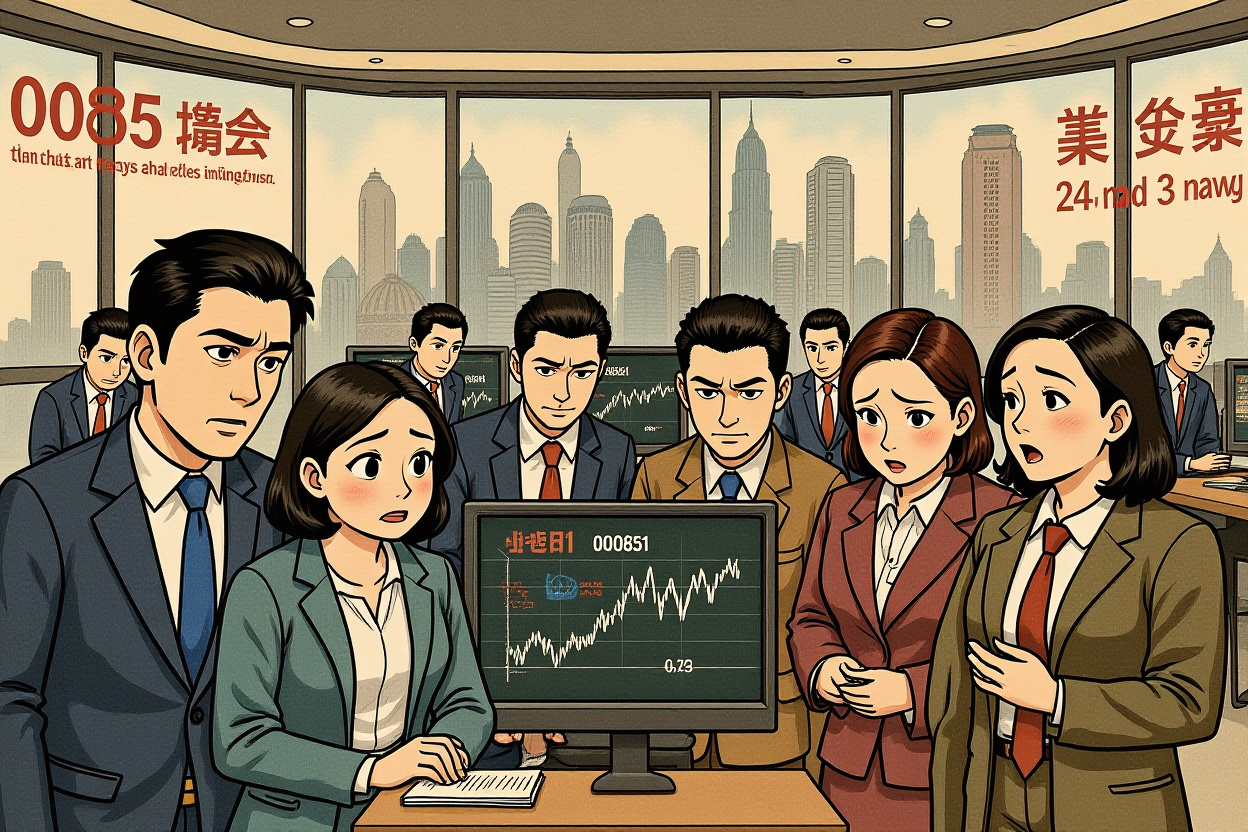Executive Summary
– 000851 (高鸿股份, Gaohong Holdings) faces mandatory delisting after consecutive trading days below 1 yuan par value, currently at 0.48 yuan
– This case highlights increasing regulatory enforcement of delisting mechanisms under China Securities Regulatory Commission (CSRC, 中国证监会) reforms
– Investors should reassess holdings in similarly positioned companies amid tightening listing standards and market restructuring
– The delisting process involves specific phases including halting trading, entry into delisting consolidation period, and final exchange removal
– Market volatility expected for small-cap and financially distressed firms as China strengthens market discipline
Market Alert: 000851 Nears Formal Delisting Threshold
China’s capital markets witnessed another critical development as 000851 (高鸿股份, Gaohong Holdings) shares fell to 0.48 yuan, triggering mandatory delisting procedures under Shanghai and Shenzhen Stock Exchange rules. The company’s stock has traded below the critical 1 yuan par value threshold for consecutive sessions, placing it on immediate watch for market participants globally.
Technical Breach and Regulatory Response
According to exchange regulations, any stock closing below 1 yuan for 20 consecutive trading days faces automatic delisting. 000851 has breached this threshold with current trading levels representing approximately 48% of the minimum value requirement. The China Securities Regulatory Commission (CSRC, 中国证监会) has been actively enforcing these rules as part of broader market reform initiatives.
Understanding Par Value Delisting Mechanisms
The par value delisting mechanism represents a key component of China’s market cleanup efforts, designed to remove chronically underperforming companies and protect investors from significant losses. This process creates natural market selection that rewards quality companies while eliminating persistent underperformers.
Regulatory Framework Evolution
China’s delisting framework has undergone significant refinement since 2018, with the CSRC implementing stricter enforcement of existing rules. The current system includes multiple delisting pathways including financial indicators, regulatory violations, and market performance metrics like par value compliance.
Company-Specific Factors Behind 000851’s Decline
000851 (高鸿股份, Gaohong Holdings), primarily engaged in information technology services, has faced numerous challenges contributing to its current predicament. Company-specific factors combined with broader market conditions have created a perfect storm driving the stock’s downward trajectory.
Financial Performance Deterioration
The company reported consecutive quarterly losses, with revenue declining approximately 34% year-over-year in the most recent reporting period. Mounting debt obligations and shrinking operating cash flows have further eroded investor confidence, creating sustained selling pressure.
Broader Market Implications and Sector Impact
000851’s situation reflects broader trends within China’s equity markets, particularly among small and mid-cap companies. Increased regulatory scrutiny and changing investor preferences have created challenging conditions for companies with weak fundamentals or unclear business prospects.
Investor Sentiment Shift
Institutional investors have increasingly focused on quality metrics and sustainable business models, reducing appetite for speculative names. This sentiment shift has accelerated the differentiation between fundamentally strong companies and those with questionable prospects.
Risk Management Strategies for Affected Investors
Investors holding positions in 000851 face complex decisions regarding position management. Understanding the delisting process timeline and available options becomes critical for minimizing potential losses and managing portfolio risk effectively.
Delisting Process Timeline
The standard delisting process typically involves several phases: trading halt announcement, delisting consolidation period (30 trading days), transfer to over-the-counter markets, and eventual company restructuring or liquidation. Investors should consult with financial advisors regarding specific position management strategies.
Forward-Looking Market Assessment
The 000851 case exemplifies China’s commitment to market discipline through enforced delisting mechanisms. This approach aligns with broader financial system reforms aimed at improving capital allocation efficiency and protecting investor interests through transparent market mechanisms.
Market Quality Improvements
Ongoing regulatory enhancements continue improving overall market quality, though short-term volatility may increase during this transition period. Investors should anticipate continued differentiation between quality companies and those facing fundamental challenges.
Market participants should conduct thorough due diligence on holdings with similar characteristics to 000851, particularly those trading near par value thresholds. Consulting with financial professionals and monitoring regulatory developments remains essential for navigating China’s evolving equity landscape. The CSRC’s commitment to market discipline suggests continued enforcement of delisting mechanisms, making fundamental analysis increasingly critical for investment success in Chinese markets.




